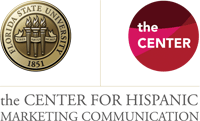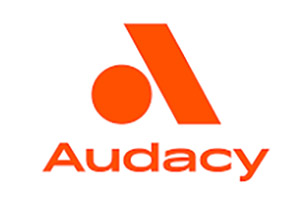Research
Women Held 1 in 5 Radio GM Roles in 2024, MIW Study Finds

Mentoring and Inspiring Women in Radio‘s annual Gender Analysis Study reveals mixed results for female leadership in radio management. While there was marked growth in sales roles, Program Director positions remain a hurdle.
Nielsen Portable People Meter AM/FM Radio Audiences: Significant Growth in Drive Times, Weekends, and Younger Demographics; Format Shares Are Stable

Nielsen has released all January 2025 Nielsen Portable People Meter markets (except for West Palm Beach). There are significant increases in listening across demographics and time periods. This audience growth is due to Nielsen’s three-minute qualifier modernization which provides a significantly more comprehensive and realistic definition of AM/FM radio’s audience and their listening behavior.
The Future of Marketing in a Multicultural America

The United States is continually growing into one of the most diverse nations in the world. By 2050, the White population is projected to decline to 46%, while Hispanic and Asian populations are expected to rise significantly (Kipnis et al., 2019) . These demographic shifts are fundamentally reshaping society and the marketplace. This challenges marketers to adapt their strategies. In a multicultural society, marketing must no longer just be about selling products; although from a revenue perspective, corporations will have to incorporate inclusivity and diversity to keep up with the dramatic demographic transition (Mueller, 2008). It is important to recognize and embrace the unique identities and needs of diverse populations. Brands or companies that fail to engage with diversity risk the potential of alienating segments of their target audiences and becoming obsolete. A multicultural society is transforming marketing practices in the United States by reshaping consumer identity through diverse demographics, emphasizing the role of cultural values in consumer behavior, and the need for inclusive marketing strategies. These shifts will require marketers to develop a deeper understanding of their audiences. By Kristina Simon - Florida State University
Race and ethnicity in religious congregations [REPORT]

Americans who go to religious services tend to worship where most other congregants and senior leaders share their race or ethnicity.
Religious upbringing and childhood education [REPORT]

The vast majority of Americans were raised in a religion. Fully 86% say that as children, they identified with Protestantism, Catholicism, Judaism, Islam or another religion. Just 13% of U.S. adults say that as children, they did not identify with any religion.
Mental Health Perceptions in the U.S. and Mexico: A Cross-Cultural Perspective [REPORT]

Mental health awareness has seen significant shifts in recent years, but cross-cultural and regional differences still play a role in how individuals perceive and address their mental well-being. A recent ThinkNow study comparing mental health attitudes and behaviors in the U.S. and Mexico offers valuable insights into how people in both countries navigate their mental health journeys.
Opportunity to Attract and Retain Highly Motivated Working Parents via Enhanced Flexibility, Stronger Support Systems

Seventy-six percent (76%) of working parents believe that becoming a parent has boosted their motivation at work, driving them to achieve greater success in their careers while also managing their family responsibilities, according to a new study released by KPMG LLP, the U.S. audit, tax and advisory firm.
The Great Unbundling – 2025 is the year advertising technology resolves conflicts of interest

For more than a decade, the advertising industry has been defined by a structural tension: Platforms providing buy-side technology have also been deeply entrenched in selling media inventory. Companies like Google leveraged their scale, deep pockets, and technological resources to dominate both sides of the coin. Any capitalist with such advantages would have done the same.
Podcast fuels Audio Market growth [REPORT]

MAGNA and VOX MEDIA have been tracking the meteoric rise of podcasts since 2020, publishing research on how podcasts fit into media strategy, followed by a look at the content creators and hosts in the world of podcasts and their influence on listeners. In a new study called “It’s All in the Mind(set)” released today, VOX MEDIA and MAGNA move the conversation beyond the medium and the makers to go deeper on how – and why – brands should consider listeners’ mindsets when advertising on podcasts.
COMMISSIONERS GOMEZ, BEDOYA TO HIGHLIGHT BARRIERS TO ENTRY FOR HISPANIC/LATINO MEDIA [VIDEO]

FCC Commissioner Anna M. Gomez and FTC Commissioner Alvaro Bedoya will convene a roundtable discussion to explore the market dynamics affecting the success and sustainability of Hispanic/Latino-serving media organizations.
Why Diverse Data Is as Critical as Diverse Media for Multicultural Audiences

U.S. consumer demographics are shifting, with multicultural consumers projected to become the majority by 2050. These audiences drive population growth, influence cultural trends, and wield significant buying power. For programmatic media buyers, it’s clear that effectively engaging multicultural consumers isn’t just an ethical choice—it’s a strategic business imperative.
The Artificial Intelligence learning curve.

By Gonzalo López Martí - Creative Director
- Your kids are doing their homework with AI.
- You are probably toying with it too.
- The learning curve, however, is an asymptote.
- Don’t know what an asymptote is?
- No need to ask ChatGPT.
5 Years Later: America Looks Back at the Impact of COVID-19 [REPORT]

The most significant pandemic of our lifetime arrived as the United States was experiencing three major societal trends: a growing divide between partisans of the left and right, decreasing trust in many institutions, and a massive splintering of the information environment.
Digital Advertisers Are Finding Success in Radio

Advertisers are discovering that the power of radio isn’t just for building brand awareness—it’s a powerful tool for driving sales and lower-funnel conversions. One experienced digital Audio advertiser recently tapped into the magic of AM/FM radio to boost engagement and skyrocket conversions. By partnering with Audacy and harnessing Claritas’ AI-powered attribution model, they were able to pinpoint exactly which radio stations were moving the needle. This innovative approach not only linked radio ads to tangible online actions but also provided deep audience insights that allowed the brand to fine-tune their strategy for maximum impact. In short, radio is proving to be a game-changer for advertisers ready to mix traditional reach with digital precision.
Super Bowl LIX Makes TV History With Over 127 Million Viewers

An estimated 127.7 million viewers tuned in for Super Bowl LIX on Sunday, February 9, according to Nielsen, making it the largest audience for a Super Bowl and for a single-network telecast in TV history. Super Bowl LIX aired on FOX, FOX Deportes and Telemundo and streamed on Tubi from approximately 6:42 PM ET to 10:16 PM ET.
SPORTS ADVERTISERS AND TV STREAMING PLATFORMS can win big with IN-GAME ADS

Sports fans remember the most thrilling highlights of a game — moments that last a lifetime. Building on this emotional resonance, MAGNA Media Trials and Transmit, a market-leading technology platform offering advanced TV advertising solutions, have collaborated to explore how brands can deliver unforgettable advertising experiences alongside TV streaming live sports content.
“CONSUMER TRENDS 2025”

Findasense, a Brand Experience agency, presents the Consumer Trends 2025 report, identifying six key trends that will shape the relationship between brands and consumers. These trends are not only a path to innovation but also a return to the essentials: trust, connection, and authenticity. Brands that successfully navigate this delicate balance will be better positioned to capture consumer loyalty and interest in an increasingly competitive market.
Leveraging Consumer Insights to Engage with Latino Voters

The results of the 2024 U.S. presidential election sent shockwaves around the globe. While the performance of the U.S. economy and inflation rate of 2.7% around the time of the election were envy of the world, many Americans were still hurting from the rapid rise in prices immediately following the pandemic. The economy, therefore, was the number one issue voters cared about in 2024, and they voted for change.
Beyond the Numbers: Reclaiming Intuition in Brand Strategy

For decades, we've all worshipped data as the ultimate decision-making tool. Standardized testing, ranking/league tables, business school and so much more has taught that numbers provide certainty — that patterns, probabilities and models will lead us forward in the best way possible. And while analysis is critical, more and more I find myself wondering if we've let go of something equally valuable: intuition.





























